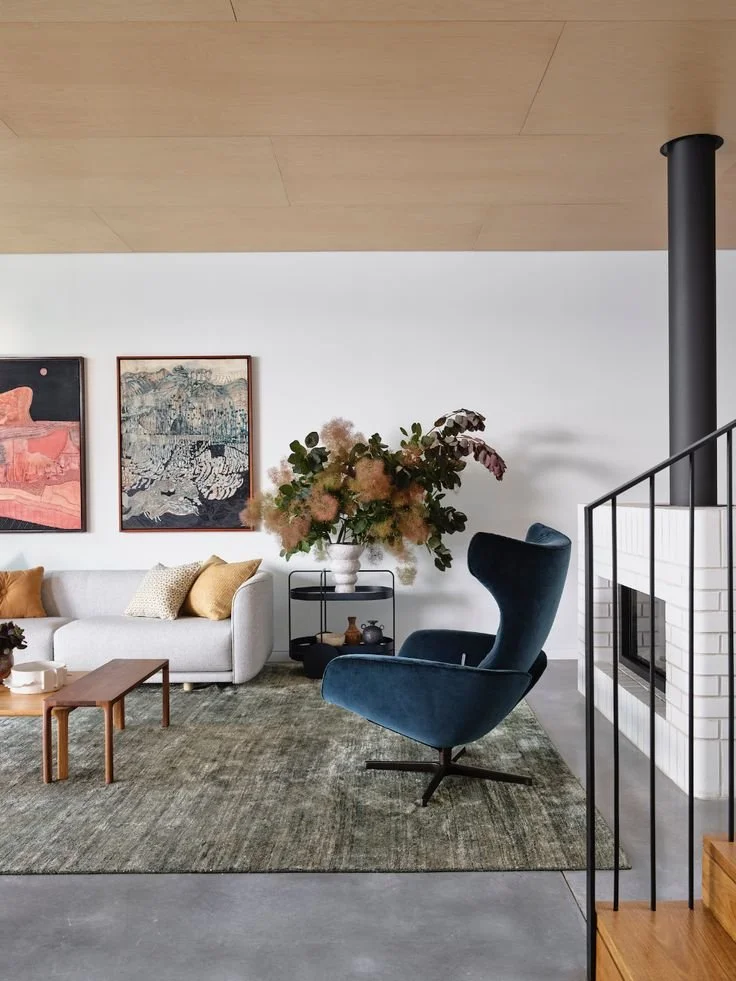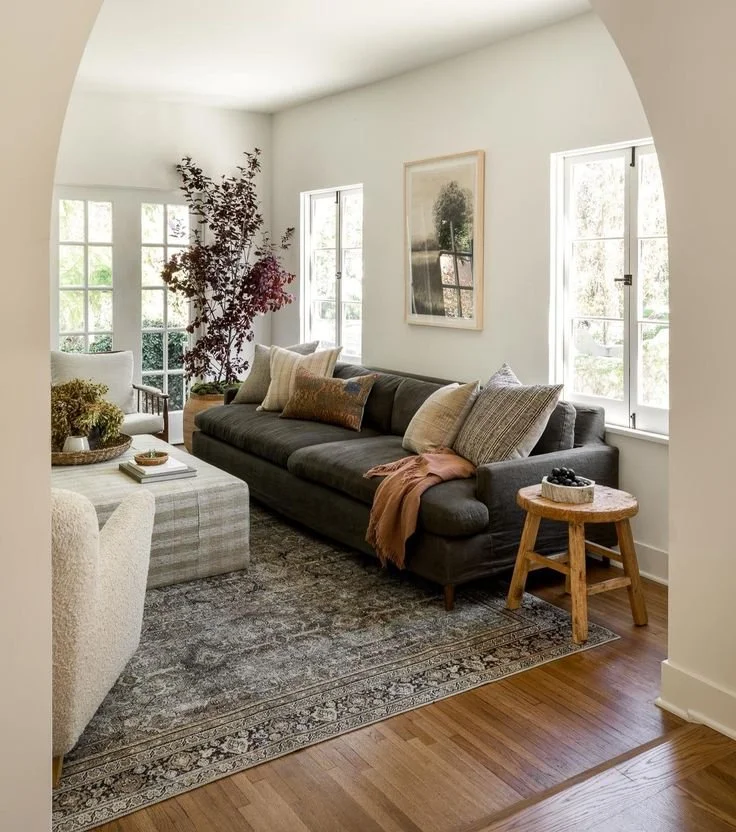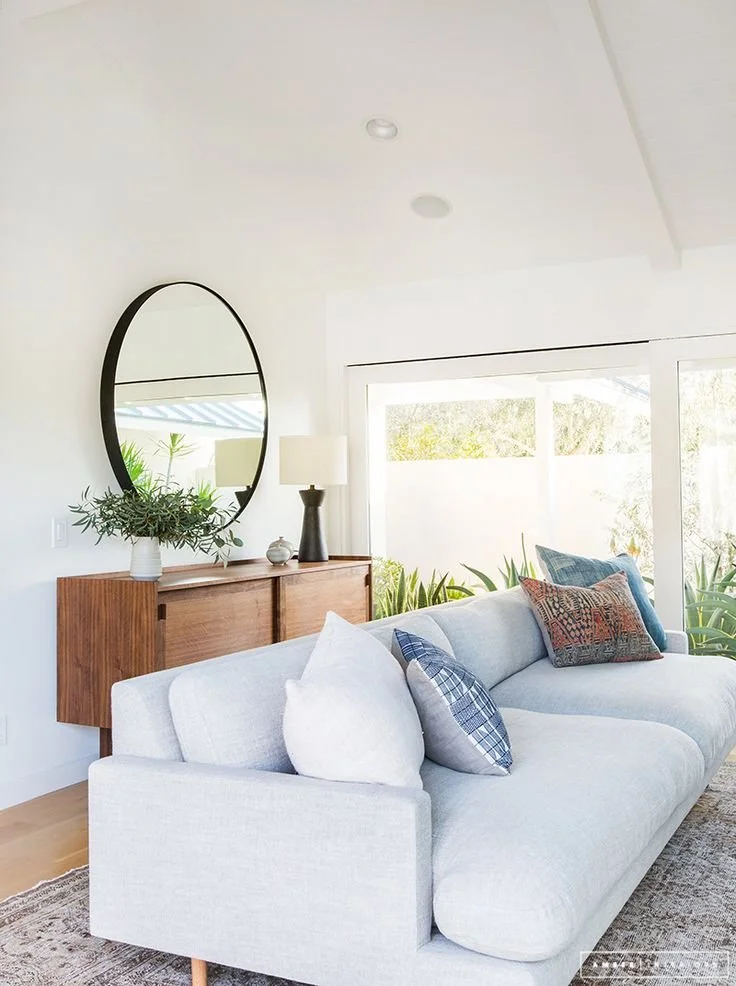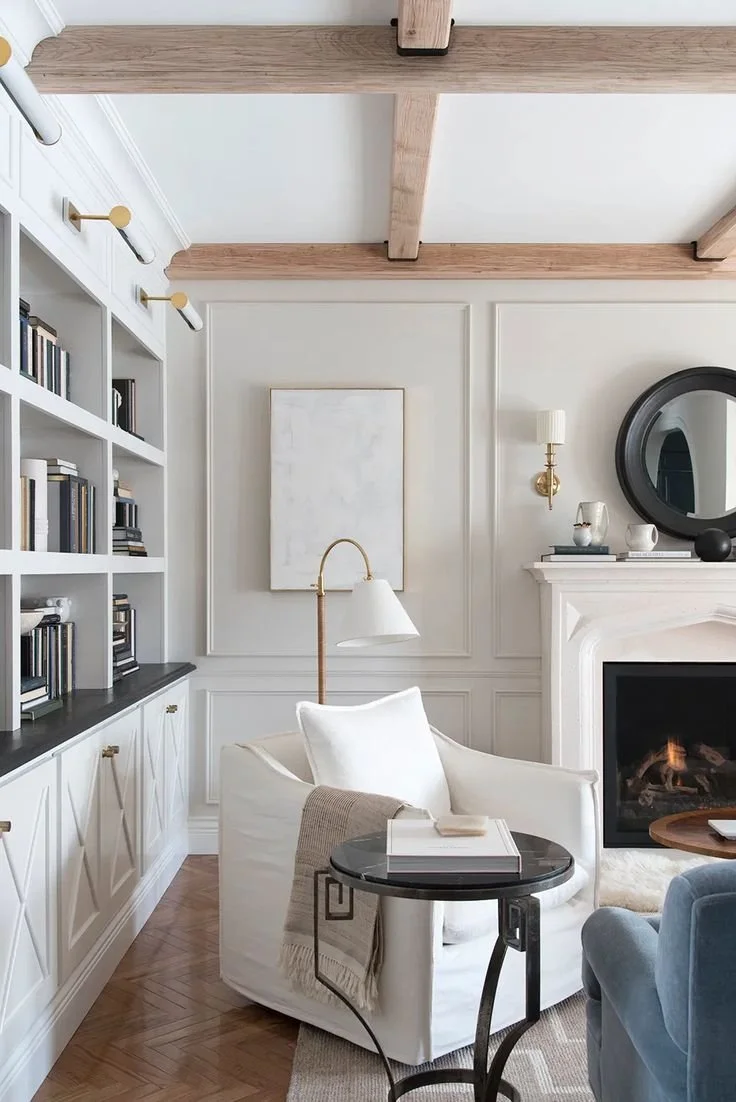Want to know why some living rooms have that cosy factor?
Use these tips to create your own welcoming space…
Arent&Pyke Collector House Living space. Photographer Anson Smart
Creating a living space that no one wants to leave is not as mysterious as it seems. Today I want to break down some key design choices I recommend to clients for their living spaces - I hope they help you too.
Scale and Proportion.
If investing in new furniture take time to measure your space first. Your main furniture pieces need to be in proportion to your overall room. Sketch out your room and determine the size sofa and armchairs that work best for your space before heading to a furniture store.
Tips
Use graph paper to measure your room and cut out different sized furniture to experiment with what works best.
Remember to include your coffee table, side tables and any floor lamps in your plan.
Consider the heights of furniture too as this contributes to the overall scale and proportion of the room as well.
2. Right sized Rug.
This is a common mistake I see when consulting with clients. It’s easy to choose a rug that is too small for your space because it seems a safer choice. The problem is that it makes your overall space seem smaller and gives the illusion of your furniture floating in space around the rug.
Tips
Measure your floor space and aim to have the front feet of your larger furniture pieces sitting on the rug.
If you have already bought a smaller rug that you love, you can layer a larger neutral rug underneath it.
Remember that rugs are an amazing way to bring texture, colour and pattern into your room - the bigger the better!
Design by Amber Lewis Interiors. A wonderful example of a large rug for a living space.
3. Space Planning.
I realise I’m talking a lot about space planning, but it’s because it’s so important. Another design tip to remember is not to push all your furniture up against the walls. Unless your room is very small, this creates a space that is not enjoyable to be in due to the lack of easy conversation. Always think, “how can I make this space easy to be in?”
Tips
Bring all the furniture at least 20-30cm away from the walls and think about creating conversation zones.
If you have a small space it’s fine to have your sofa against the wall, but consider moving your armchairs off the wall on the opposite side.
If you have the space consider placing a console behind your sofa with room to wall between both pieces easily. Interior design by Amber Lewis Interiors.
4. Take advantage of the Focal Point.
If you have a lovely view or an interesting focal point within your room, take advantage of it! Position your living room furniture to highlight your focal point, as this is what you want to notice when you enter the space.
Tips
Whether it’s a fireplace or stunning view, consider how this can be your primary focal point rather than the T.V.
If you have not option than the focal point being the T.V. add shelving, art and other decorative pieces to the T.V. wall to make it more cohesive.
5. Hang Window Furnishings at Right Height.
Window furnishings can make or break a room. A designer tip I can give you is to always hang your curtains or blinds higher than the top of the window. This will elevate your room and help it to feel larger than it is.
Tips
Hang your curtain rod 80-100cm from the bottom of your cornice if practical.
Allow for at least 30cm of fabric to sit either side of your window frame to create a luxiurous look.
Finish your curtains to barely touch the ground not higher!
Design by Jenna Sue Design Co. Even with a vaulted ceiling, to hang the window furnishings as high as practical has automatically elevated this living space.
6. No Matching Furniture Sets.
The quickest way to create a design worthy living space is to steer away from matching furniture sets. Remember, you are trying to create a personalised, unique room, not a furniture catalogue display. Sure, your pieces still need to be cohesive and relate to each other but thankfully there are so many options available out there.
Tips
Mix up the colours and finishes in your large furniture pieces. Think about your overall colour palette and play around with options before you purchase pieces.
Consider including different design styles (e.g. your sofa being different to your armchairs) if these styles are found elsewhere in your home.
Mixing furniture shapes is a winner way to create interest.
Arent&Pyke Collector House Living space. Photographer Anson Smart. Here’s a sophisticated example of mixing furniture styles, heights and textures to create a bespoke look.
7. Limit your Art to keep it Front and Centre.
Another common thing I see when working with clients is having art too spread out on too many surfaces. Just because you have a blank wall doesn’t mean you need art on it. Edit your art and photography down to your favourite pieces and hang them in a considered way.
Tips
Cluster your art together on one wall, rather than having them floating on the wall.
Include plenty of negative space to allow your artworks to really shine.
When hanging artwork above your sofa, make sure you can lean back comfortably without coming in contact with it.
Design by TRNK. The eye appreciates these artworks more when clustered together, rather than spread out all over the room.
8. Include Multiple Lighting Sources
Lighting is honestly one of the main ways you can elevate your living space. You can run of the mill furniture, but with multiple lighting sources that are dimmable any space can look quite lovely.
Tips
Remember that one ceiling light, or down lights are not enough for your room.
Include layers of lighting using floor and table lights at different heights.
Choose warm white LED’s to keep space from feeling cold.
Choose lighting with dimmers everytime!
Design by Sarah Gibson. In this living room you can see layered lighting with the use of wall sconces, floor lamp and built-in cabinetry lighting.
Consider incorporating all or any of these 8 design tips and you’ll be pleasantly surprised at the difference they will make to your living space. Tackle one design tip at a time if you feel overwhelmed.
I’d love to hear how you go with creating a living room that is cosy and welcoming for your friends and family.
Lastly, if you need more individualised help with your living spaces - it could be advice on the floor plan or furniture choice, then feel free to reach out to me here. We can jump on a phone call and I can learn more about what you need - I’d love to help.
Want to stay in touch with me and receive my monthly newsletter? There you will find useful design tips to help you in the design of your home. Would you like my free styling guide to help you make styling your spaces easier? Sign up here if interested.







